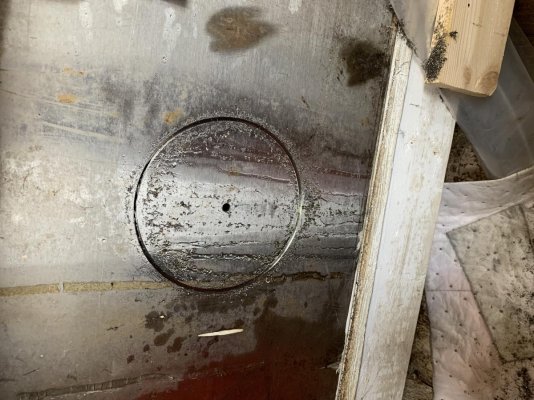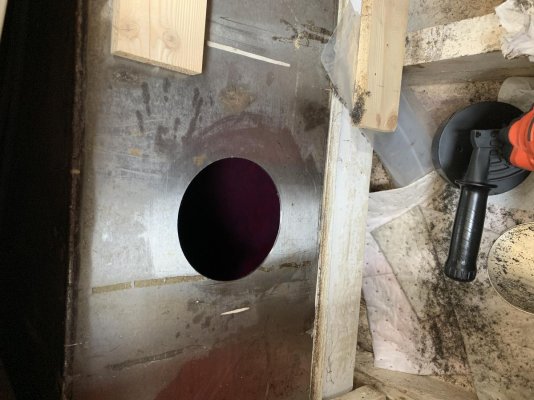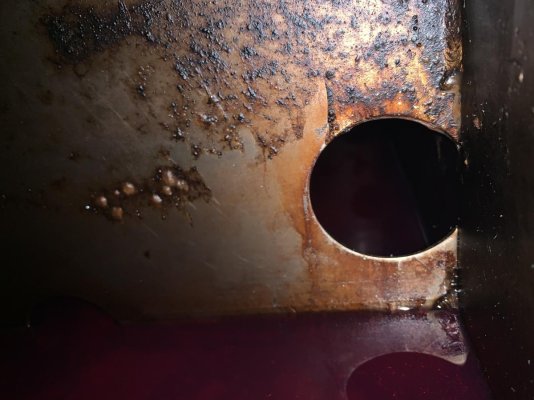C lectric
Guru
I have used large holes saws and they can jam very easily and they will twist your arms so quickly you may not be able to control/stop it even if the drill has a large handle.
As mentioned SS will work harden quickly under a cutter if you do not keep enough pressure on to ensure it cuts and keep the metal lubed and cool. That will be very difficult with a large hole saw in an awkward position.
I too would suggest a sabre saw or a reciprocating saw and the appropriate blades for the thickness. Because the sabre/recipro saws only present a small cutting edge they are much easier to maintain the cutting pressure and they won't twist like the drill.
Mark out the ID of the plate which I'm sure you have done.
THen drill several holes around the ID of the access hole so the OD of the drill bit is just inside of the access hole. I would go with every 90o or 4 holes of a size, 1/2", to allow the insertion of the sabre saw blade. You will likely need to go with a much smaller pilot initially.
Use Cobalt or titanium nitrided drill bits with the split points and SHARP and new. I'm pretty decent at hand sharpening bits but for this I would not do that. There are machines out there but even a Drill Doctor will cost more than the few bits. The split points will help get the bit started more easily and without all the walking. Just make a good centre punch mark. A very small drill bit as above may suffice for easy enlarging of a poor centre punch mark.
The access hole edges can be cleaned up afterwards once the large hole has been made..
Wear good hearing and eye protection.
As a last suggestion use lots of paper towels under and around the cutting area to catch chips. They will reduce the chip bounce a lot so they don't scatter as much which will reduce your cleanup. Newspaper not so good.
As mentioned SS will work harden quickly under a cutter if you do not keep enough pressure on to ensure it cuts and keep the metal lubed and cool. That will be very difficult with a large hole saw in an awkward position.
I too would suggest a sabre saw or a reciprocating saw and the appropriate blades for the thickness. Because the sabre/recipro saws only present a small cutting edge they are much easier to maintain the cutting pressure and they won't twist like the drill.
Mark out the ID of the plate which I'm sure you have done.
THen drill several holes around the ID of the access hole so the OD of the drill bit is just inside of the access hole. I would go with every 90o or 4 holes of a size, 1/2", to allow the insertion of the sabre saw blade. You will likely need to go with a much smaller pilot initially.
Use Cobalt or titanium nitrided drill bits with the split points and SHARP and new. I'm pretty decent at hand sharpening bits but for this I would not do that. There are machines out there but even a Drill Doctor will cost more than the few bits. The split points will help get the bit started more easily and without all the walking. Just make a good centre punch mark. A very small drill bit as above may suffice for easy enlarging of a poor centre punch mark.
The access hole edges can be cleaned up afterwards once the large hole has been made..
Wear good hearing and eye protection.
As a last suggestion use lots of paper towels under and around the cutting area to catch chips. They will reduce the chip bounce a lot so they don't scatter as much which will reduce your cleanup. Newspaper not so good.
Last edited:












